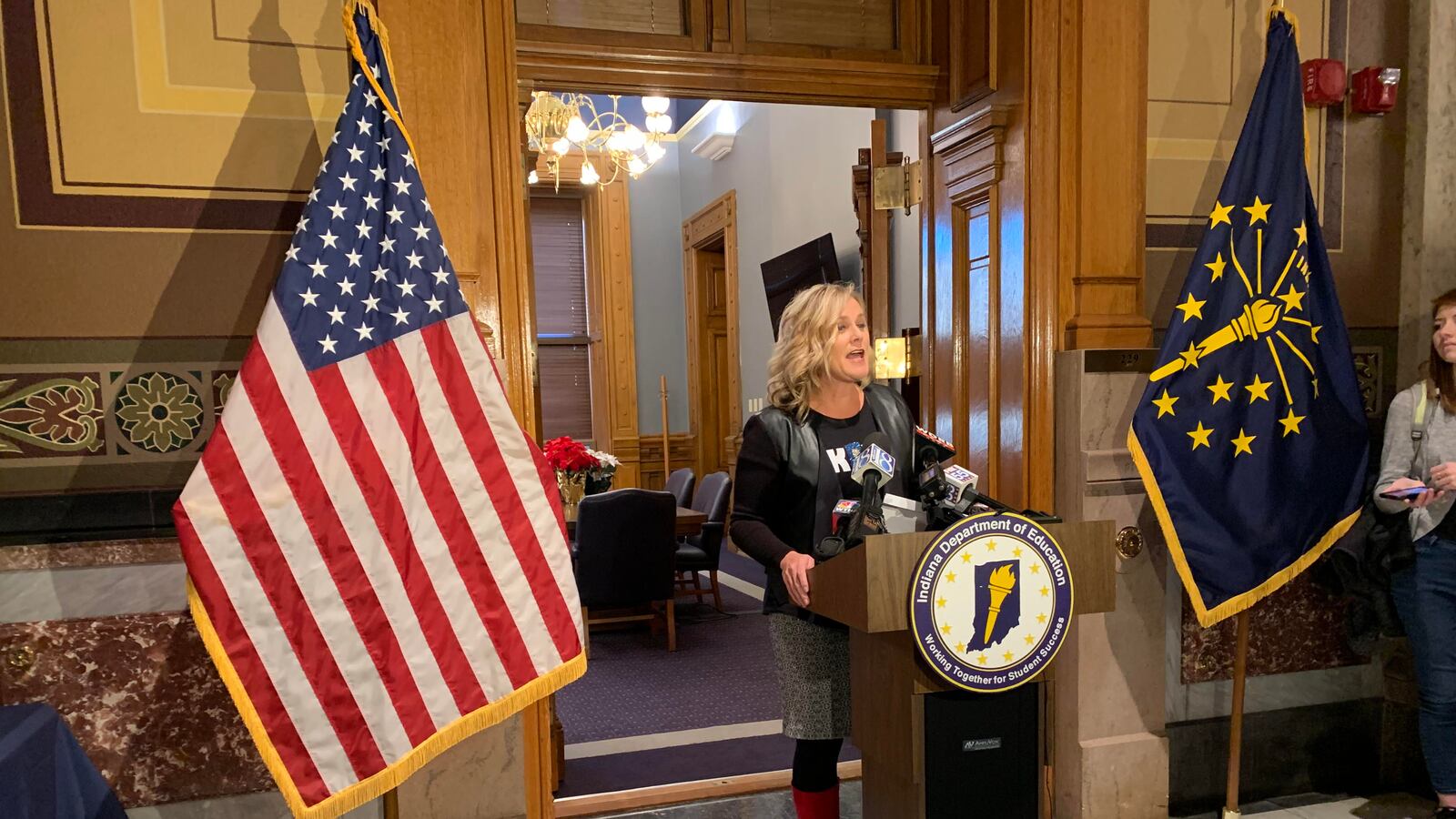With some Indiana students continuing to do schoolwork on paper while their classmates take part in video conferences with teachers, State Superintendent Jennifer McCormick says the state must make critical investments to ensure all families have internet access.
“This infrastructure is just as important as I-69 being paved,” McCormick said Tuesday in a livestreamed address to the media. “We need to make sure that all citizens have access to the internet. … It’s crippling if as a state we don’t take care of it.”
Without any comprehensive statewide effort to get all students online during the coronavirus crisis, districts have largely been tasked with filling the gaps when it comes to computers and home internet access.
Some school systems have distributed hundreds of devices that would typically stay in classrooms, given out mobile wireless hotspots, and set up Wi-Fi in school parking lots so students can do their work from their cars.
It’s unclear exactly how many families statewide can’t get online, but not all school districts have the technology or the money to guarantee universal access. Even when students do have the technology necessary to log on, some low-income families can’t take advantage of free internet offers because of outstanding bills with service providers, Chalkbeat recently revealed.
“This is not a school issue,” McCormick said. “The access, in my opinion, is a statewide issue. That’s our infrastructure that we should be putting significant dollars behind.”
Gov. Eric Holcomb has said his office is working alongside the state Department of Education to help individual districts. Last week, he said the state would deal with issues reported to his office on a case-by-case basis.
When asked by Chalkbeat on Tuesday, Holcomb responded to McCormick’s call by saying the state’s infrastructure needs are “a balance.” He pointed to his $100 million initiative to expand broadband access in rural areas of the state. His administration began giving out grants last year.
“We have been way out in front in terms of internet connections,” he said.
In Indiana, 77.6% of households have a broadband internet subscription, according to 2018 American Community Survey data — putting the state below the national average of 80.4%.
In New York, pressure from local officials spurred an internet provider to waive its policy barring families with unpaid bills from receiving 60 days of free internet access. In California, the governor worked with tech companies and philanthropists to provide 100,000 free Wi-Fi access points and 70,000 devices for students.
When asked Tuesday about potential statewide solutions, Katie Jenner, Holcomb’s senior education adviser, pointed to a local effort between the city of Indianapolis and local philanthropists. They pooled more than $2 million to support expanding e-learning for school districts in Marion County.
“Connectivity will continue to be a priority for our state as we look not only locally to rural school districts, but also as we look to urban school districts,” Jenner said.

